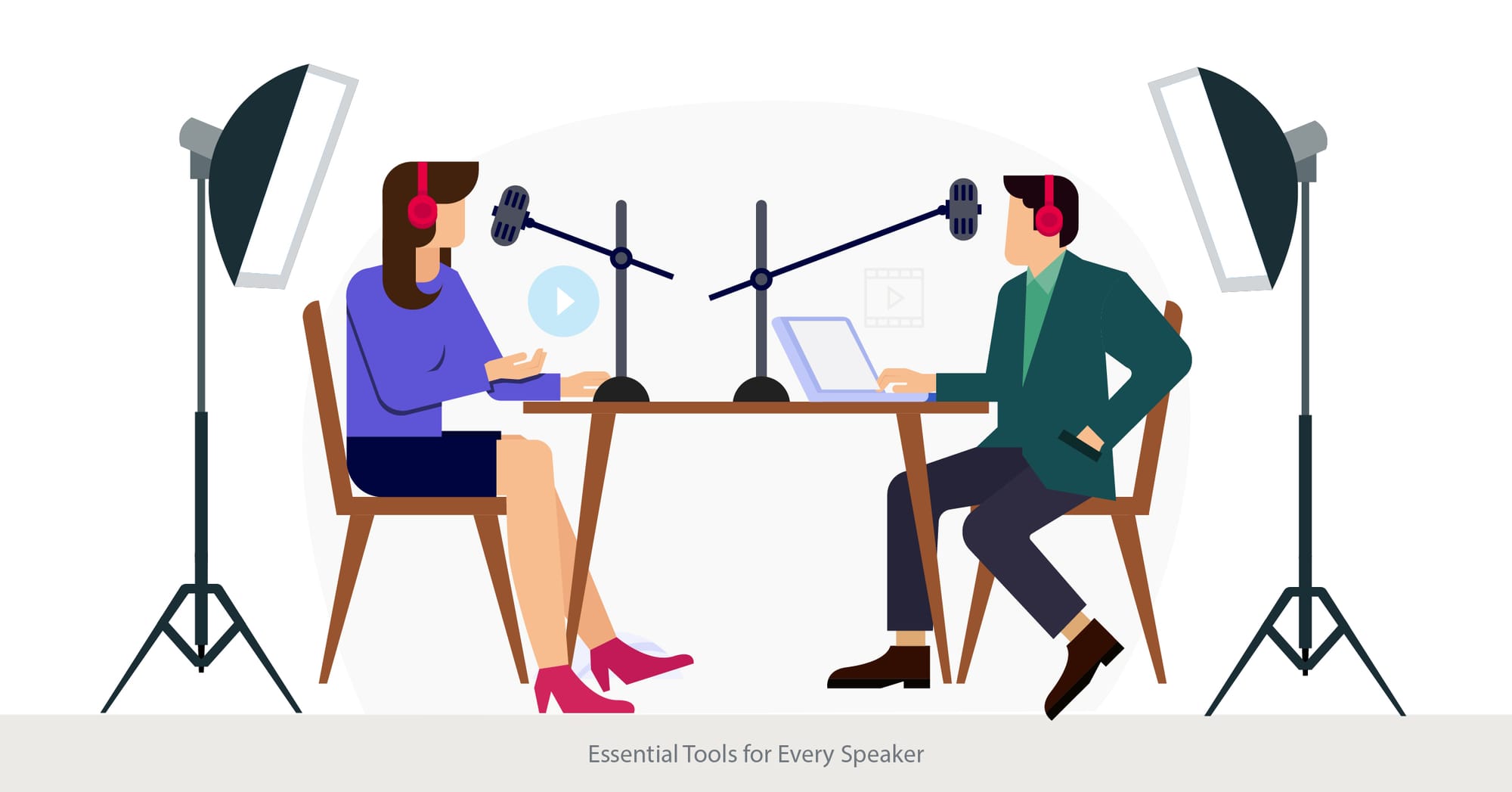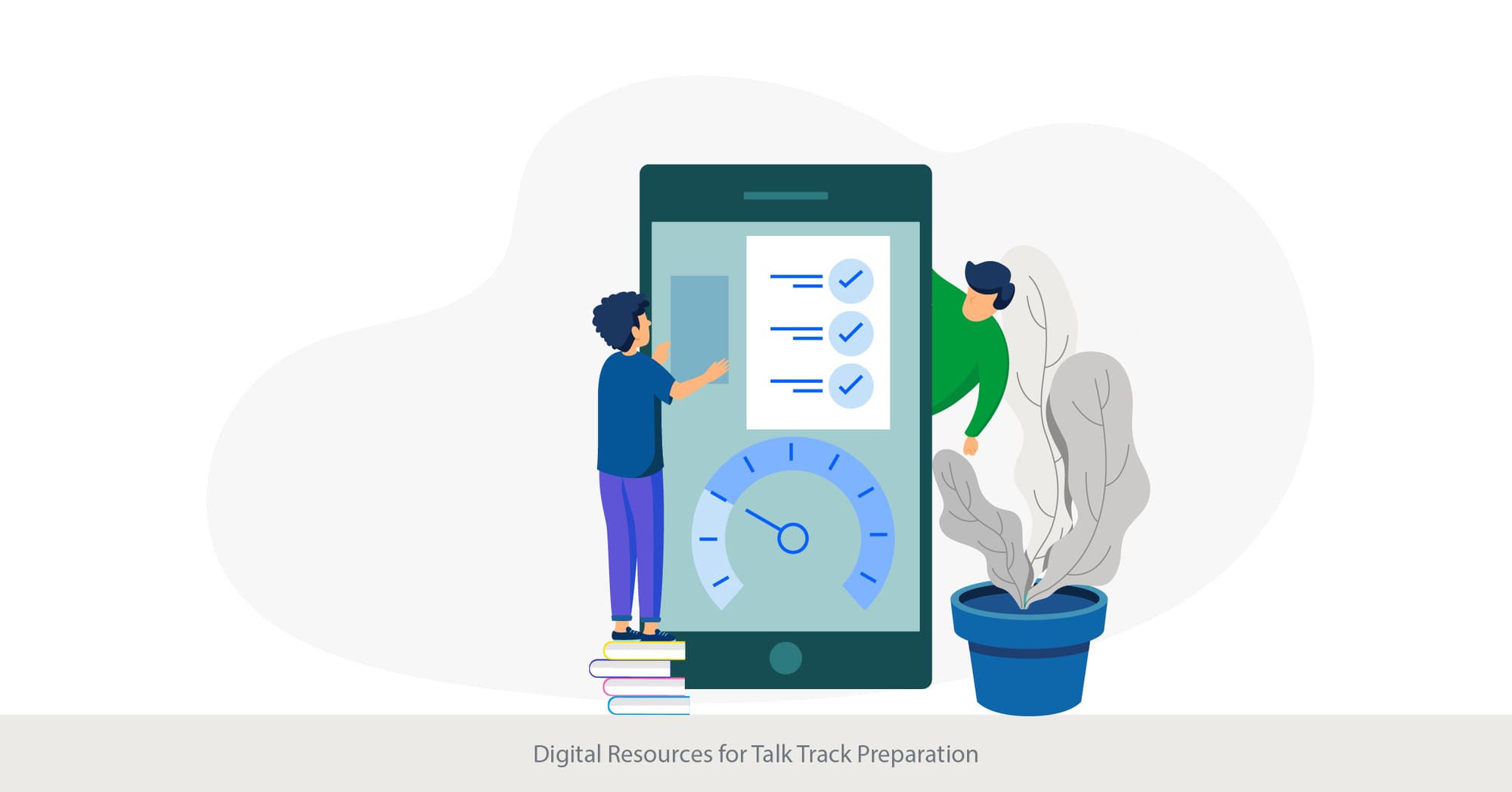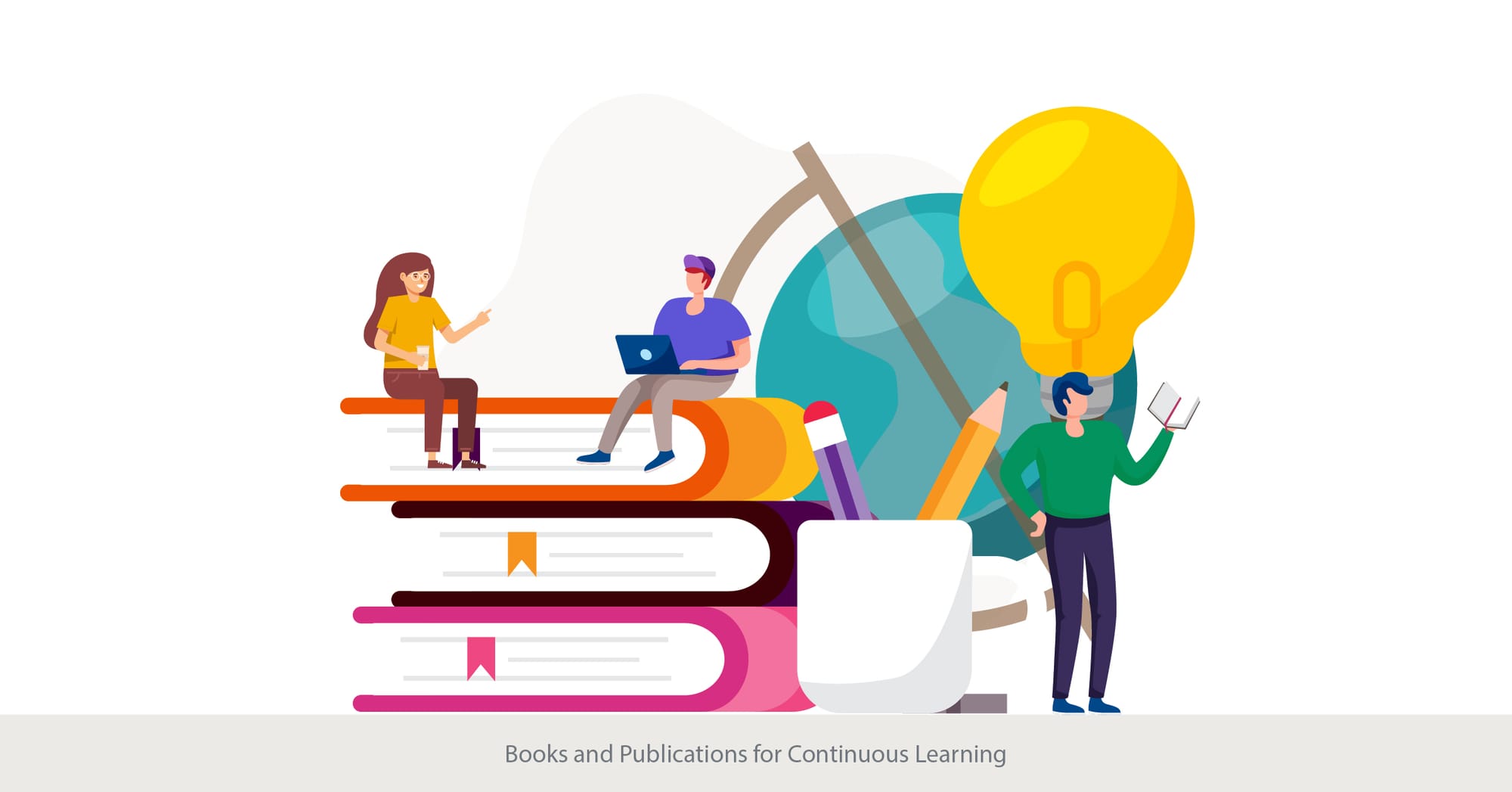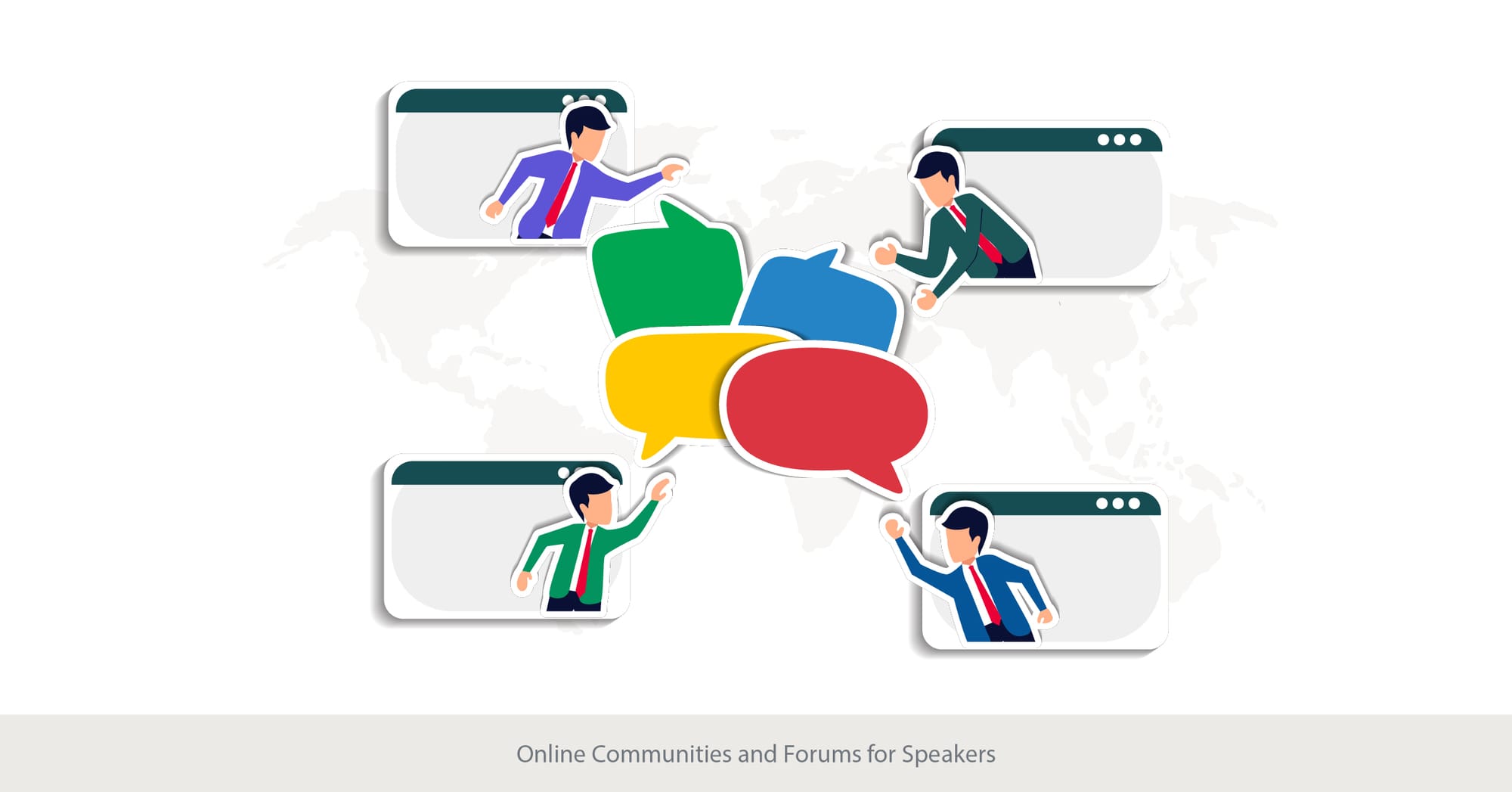
Essential Tools for Every Speaker

Introduction: Unveiling the Arsenal for Effective Communication
For anyone stepping into the realm of public speaking or sales presentations, possessing the right tools can transform a basic talk into a compelling narrative. This essential toolkit not only enhances the speaker's confidence but also enriches the audience's experience. In this exploration, we delve into the quintessential instruments that every speaker should have in their arsenal, ranging from high-tech gadgets to simple, yet powerful, rhetorical techniques.
Background: The Evolution of Speaking Tools
Historically, speakers relied heavily on natural charisma and rhetorical skills honed through practice and observation. However, the digital age introduced a plethora of tools that have revolutionized how presentations are crafted and delivered. From the traditional teleprompter to sophisticated software solutions like PowerPoint and Miro TalkTrack, these tools offer unprecedented support in organizing and emphasizing key points, allowing speakers to deliver their messages with clarity and precision.
Real-world Applications: Modern Tools at Work
In today's market, sales professionals and public speakers enhance their talk tracks with tools like CRM software, which helps tailor discussions to the audience by providing detailed client insights. For example, a sales rep using a tool like Salesforce can access a customer's purchase history to refine their sales talk track, making the sales conversation even more relevant and engaging. Similarly, TEDx speakers often use tools like Prezi or Keynote to create dynamic, visually captivating presentations that resonate with diverse audiences.
References and External Validation
The importance and effectiveness of these tools are well-documented in several studies and expert articles. For instance, a Harvard Business Review article highlighted how tools like Miro TalkTrack can increase engagement during virtual presentations by up to 50%. Moreover, industry surveys by organizations like Toastmasters International have shown that speakers who effectively utilize digital aids are 34% more likely to achieve their desired outcomes, such as positive outcome such as closing a sale or receiving positive feedback.
Digital Resources for Talk Track Preparation

Introduction: Harnessing Technology for Enhanced Preparation
In the ever-evolving landscape of speaking and presentation, digital resources have become indispensable. These tools not only streamline the preparation process but also offer innovative ways to refine and perfect talk tracks. From interactive platforms that facilitate rehearsal to databases filled with industry-specific jargon and phrases, digital resources empower speakers to prepare thoroughly and tailor their content to their audience's needs.
Background: The Digital Revolution in Speech Preparation
The transition to digital resources for talk track preparation marks a significant evolution from the days of handwritten notes and static PowerPoint slides. Today, platforms like Evernote for note-taking, or Trello for organizing specific talk track dashboard and points, provide a structured and accessible way to assemble and manage presentation content. Additionally, sophisticated software like Miro TalkTrack allows for real-time collaboration and feedback, making the preparation process more dynamic and interactive.
When crafting engaging presentation narratives, it’s essential to build a compelling story that resonates with the audience. A strong narrative not only keeps your audience hooked but also aids in delivering key points more effectively. Tools like customizable templates help structure these narratives for maximum impact.
Explore more tips in our latest blog articles for impactful presentations!
Real-world Applications: Digital Tools in Action
One notable instance of digital resources at work is seen in the preparation routines of professional keynote speakers. Many utilize apps like SpeechMaker to script their presentations and practice timing, while others rely on video feedback tools to refine their delivery and body language. For sales professionals, CRM systems integrated with AI, such as HubSpot, offer insights into customer interactions, which can be crucial for customizing sales talk tracks based on prior engagement and demographic data.
References and External Validation
Research underscores the efficacy of these digital tools. A study published in the Journal of Business Communication found that speakers who utilized digital rehearsal tools were 25% more persuasive than those who didn't. Furthermore, an article in Forbes praised the use of apps like Miro TalkTrack for their role in enhancing the adaptability of sales teams to varied customer scenarios, significantly boosting sales team call conversion rates.
Read our free guides to mastering effective presentation design!
Books and Publications for Continuous Learning

Introduction: The Evergreen Value of Books in Speaker Development
While digital tools offer immediacy and interactivity, books and publications remain fundamental for deep, continuous learning in the field of public speaking and sales. They provide comprehensive insights, historical perspectives, and advanced techniques that are crucial for refining talk tracks and enhancing presentation skills. This segment explores the indispensable role that a well-curated personal library can play in a speaker's ongoing development.
Background: A Rich Repository of Knowledge
Books on public speaking, sales techniques, and communication strategies have long been the bedrock of professional development. Classics like Dale Carnegie’s How to Win Friends and Influence People have been supplemented by modern works that incorporate current trends and technologies. These publications often serve as a mentor in print, offering structured learning that can be revisited and absorbed at the reader’s pace, providing a depth of knowledge that temporary digital content cannot match.
Real-world Applications: Learning from the Masters
The practical application of lessons from these books can be seen in the careers of renowned speakers and business leaders. For example, TED speakers are known to reference key works in their talks, drawing on proven strategies and personal anecdotes from seasoned authors to enhance their narratives. Sales professionals might turn to books like SPIN Selling by Neil Rackham to understand customer behavior better and refine their own sales scripts and talk tracks with tested methods.
References and External Validation
The effectiveness of incorporating books into preparation routines is well-supported by data. A survey by the National Speakers Association showed that speakers who engage in regular reading are more likely to adapt their talk tracks successfully to different audiences and situations. Additionally, numerous academic studies, such as those found in the Journal of Marketing Education, emphasize the long-term benefits of integrating traditional publications into one’s learning repertoire for sustained skill enhancement.
See how we’ve helped brands like yours in our case studies!
Online Communities and Forums for Speakers

Introduction: The Digital Agora for Speakers
In the digital age, online communities and forums have emerged as vital platforms for speakers of all levels to exchange ideas, seek advice, and find support. These virtual spaces offer a unique opportunity to connect with peers from around the globe, share experiences, and grow together. This segment explores how engaging with online communities can be an integral part of developing and refining the best talk tracks ever.
Background: The Rise of Virtual Speaker Communities
The concept of community-based learning has been around for centuries, but the advent of the internet has significantly expanded its scope and accessibility. Platforms like LinkedIn groups, specialized forums on Reddit, and industry-specific networks provide a space for speakers to discuss techniques, share digital resources, and collaborate on projects. These forums often host expert Q&A sessions, live webinars, and ongoing discussions that keep members at the forefront of speaking trends and innovations.
Real-world Applications: Communities in Practice
Real-world examples abound of speakers who have honed their skills through participation in online forums. Many members of the Toastmasters International web forum, for example, share and critique each other’s presentations, gaining valuable feedback that is immediately applicable to their next talk. Similarly, sales professionals in communities like Sales Hacker discuss and refine their sales talk tracks, benefiting from the collective experience and feedback of other sales reps in the group.
References and External Validation
The impact of participation in these online communities is supported by research. Studies indicate that speakers who actively engage in these forums improve their public speaking skills more rapidly than those who don’t. A report in the Journal of Applied Communication Research highlights how community feedback mechanisms contribute significantly to refining speakers' messages and delivery, often leading to higher engagement and better performance in live settings.
Software and Apps for Presentation Design

Introduction: Enhancing Aesthetic Appeal and Engagement
In the realm of public speaking and sales, the visual aspect of a presentation can be just as crucial as the content of sales presentation itself. Software and apps dedicated to presentation design not only make it easier to create visually stunning slides, but they also help in organizing information in a more engaging and digestible manner. This segment explores the various tools available that can elevate the aesthetic and functional quality of talk tracks.
Background: The Evolution of Presentation Software
The journey from basic slide creators like early versions of PowerPoint to more sophisticated design tools like Adobe Spark and Canva reflects the growing importance of visual appeal in presentations. These tools offer a range of features from template-based designs to custom graphics, enabling speakers to tailor their presentations to the audience's expectations and the session's tone. The integration of interactive elements such as polls and animations has further transformed how information is conveyed, making it more dynamic and memorable.
Real-world Applications: Tools at Work
Practical applications of these software tools are widespread across various industries. Sales teams, for example, use tools like Prezi and Keynote to craft compelling sales pitches that visually map out the benefits of a product or service, enhancing the persuasive power of their talk tracks. In academic and training environments, educators employ these apps to create interactive lectures and workshops that foster greater engagement and retention among participants.
References and External Validation
The effectiveness of these tools in enhancing presentation quality and audience engagement is well-documented. Studies published in communications journals have demonstrated that presentations designed with sophisticated software are significantly more effective at retaining audience attention and facilitating understanding. Furthermore, feedback systems integrated within these apps provide invaluable insights into audience reactions, which can be used to refine and perfect future presentations.
An effective talk track for events combines clear objectives, impactful messaging, and smooth transitions. Ensuring that your talk flows seamlessly with visual aids is crucial to keeping the audience engaged. Using tools like feedback apps can help refine talk tracks for better audience reception and understanding.
Recording and Playback Devices for Practice

Introduction: The Role of Self-Review in Speaker Development
Effective public speaking and sales presentations are not just about content but also about delivery. Recording and playback devices are essential tools for speakers who wish to refine their delivery by providing the means to review performances objectively. This section explores how these devices can be used with which talk tracks to enhance both verbal and non-verbal communication elements, contributing significantly to the overall effectiveness of a talk track.
Background: Historical and Technical Overview
Historically, speakers have used mirrors or rehearsed in front of peers to get feedback on their delivery. With technological advancements, the use of audio recorders and video cameras has become prevalent, allowing for more detailed analysis. Modern devices now offer high-definition video and clear audio recording, which are now all the critical information for reviewing aspects such as pacing, tone, body language, and audience interaction. Additionally, software solutions can integrate with these devices to provide analytics on speech patterns and effectiveness.
Great presentations do more than convey data—they tell a story that captivates the audience. By weaving facts and insights into a narrative, presenters can create emotional connections, making their messages memorable. Presentation software offers customizable templates that make storytelling visually appealing and cohesive.
Real-world Applications: Practical Usage of Recording Tools
In the real world, these tools are extensively used by professionals across fields. Sales teams, for instance, record their sales calls to analyze the effectiveness of their sales talk tracks and improve their closing techniques. Public speakers often record their rehearsals and performances to observe their body language and audience engagement, making necessary adjustments to improve their future presentations. Educational institutions and training programs also utilize these devices to provide constructive feedback to learners.
References and External Validation
The benefits of using recording and playback devices are supported by numerous studies and expert opinions. Research published in the Journal of Communication indicates that speakers who regularly review their recorded performances improve significantly faster than those who do not. Additionally, feedback obtained from playback is often used in coaching sessions, where experienced mentors provide targeted advice based on the recordings, further enhancing the speaker’s skills and confidence.
Stay updated with the latest trends—subscribe to our blogs today!
Feedback and Evaluation Tools

Introduction: The Crucial Role of Feedback in Refining Talk Tracks
Feedback is a cornerstone of effective communication, providing speakers with critical insights into their performance and areas for improvement. Utilizing feedback and evaluation tools allows speakers to systematically assess their talk tracks and delivery, aligning their approach more closely with audience expectations and objectives. This section delves into the types of tools available and their impact on speaker development.
Effective presentation design focuses on engagement by using visual aids that enhance the message. From interactive slides to compelling data visuals, design plays a pivotal role in holding attention. Tools such as Canva and Adobe Spark offer customizable options that allow you to maintain audience engagement throughout the talk.
Background: Evolution and Importance of Feedback Tools
Traditionally, feedback came directly from audience reactions or peer reviews, which, while valuable, could be subjective and sporadic. The development of digital feedback tools has transformed this landscape, enabling real-time, actionable feedback that is both quantitative and qualitative. Tools such as audience response systems, online survey platforms, and specialized software for speech analysis help speakers gauge the effectiveness of their delivery and content in a structured manner.
Real-world Applications: Implementing Feedback Mechanisms
In practice, these tools are employed across various scenarios to enhance communication skills. For instance, corporate trainers use audience response systems to immediately understand participant engagement and comprehension during workshops. Sales professionals might use CRM software integrated with sales call talk track along with feedback mechanisms to refine their sales talk tracks based on customer reactions and feedback gathered post-engagement. Public speakers often rely on mobile apps that provide analytics on pacing, volume, and clarity, allowing them to adjust their performances in subsequent talks.
The development of a presenter’s talk track is vital to delivering a cohesive and persuasive message. By focusing on key themes, maintaining clarity, and practicing proper pacing, presenters can create a track that enhances their delivery. Using tools like video recording apps helps refine these tracks for maximum impact.
References and External Validation
The utility of feedback and evaluation tools is well-supported by evidence. Studies in educational technology journals have shown that speakers who utilize these tools consistently perform better and adapt more swiftly to audience needs. Feedback systems are particularly noted for their role in professional growth, as cited by a study in the Review of Educational Research, which highlighted significant improvements in speakers' engagement and persuasiveness when using such tools.
Customizable Templates and Checklists

Introduction: Streamlining Preparation and Delivery
Customizable templates and checklists serve as invaluable resources for speakers by providing structured frameworks that can be tailored to suit various speaking scenarios. These tools help ensure that all critical elements of a talk track are considered and executed, reducing preparation time and increasing the effectiveness of the presentation. This section explores how these templates and checklists can enhance both the preparation process and the delivery of a talk track example and tracks.
Background: The Foundation of Organized Speaking
The use of templates and checklists in speaking engagements is not a new concept, but the customization options available today offer unprecedented flexibility. Templates for presentations can range from basic slide layouts to complex structures designed for specific types of talks, such as sales pitches or educational lectures. Checklists, on the other hand, can help speakers ensure they cover all necessary points in their talk track, from opening remarks to final calls to action.
Real-world Applications: Templates and Checklists in Action
Templates and checklists are widely used in various fields to great effect. Sales teams, for example, might use a series of customized templates for different stages of the sales process, each designed to convey key information effectively and drive the sales talk track the sales process forward. Educators might use checklists to structure their lectures, ensuring that all learning objectives are met and key points are communicated clearly. In corporate settings, executives use presentation templates to maintain brand consistency and messaging across all communication.
References and External Validation
The effectiveness of using customizable templates and checklists is well-documented. Studies in business communication have shown that speakers who use these tools are more likely to deliver coherent and compelling presentations. Moreover, a survey by a leading industry conference reported that over 75% of successful speakers regularly use customized templates and checklists to prepare their talks, highlighting the practical benefits of these tools in professional settings.
Networking Opportunities for Speakers

Introduction: Expanding Connections and Opportunities
Networking is a pivotal aspect of building a successful speaking career, offering opportunities to connect with peers, mentors, and potential collaborators. For speakers, networking can open doors to new platforms, audiences, and resources, enhancing both personal growth and professional visibility. This section examines the variety of networking opportunities available to speakers and how they can leverage these to enhance their talk tracks and careers.
Background: The Importance of Networking in the Speaking Industry
The speaking industry thrives on connections and collaborations. Networking events, whether online or in-person, provide a venue for exchanging ideas, securing speaking engagements, and learning from experienced speakers. These events range from conferences and workshops to local meetups and professional associations, all designed to foster relationships, build rapport, and share knowledge among professionals in the field.
Real-world Applications: Networking in Practice
Practical examples of successful networking are numerous. Speakers often attend industry-specific conferences like TED or Toastmasters where they not only present but also connect with other experts and influencers. These interactions can lead to collaborative projects, mentorship opportunities, and even sponsorships. Additionally, sales professionals might network to find prospects or learn new strategies for their sales talk tracks, gaining insights that can be directly applied to sales conversations to enhance their effectiveness.
References and External Validation
The value of networking for speakers is supported by substantial research and testimonials. Industry studies have shown that speakers who actively network report higher satisfaction rates in their careers and are more likely to receive repeat invitations to speak. Articles in business magazines like Forbes and Harvard Business Review often emphasize the critical role of networking in career development, noting that many successful speakers attribute a significant portion of their success stories to the connections made through networking.
Continuous Education: Workshops and Seminars

Introduction: Lifelong Learning for Speakers
Continuous education through workshops and seminars is essential for speakers wishing to stay relevant and effective in their field. These educational events not only provide the latest insights and techniques but also offer a platform for speakers to practice new skills in a supportive environment. This section explores the importance of ongoing education in maintaining and enhancing a speaker's capabilities and talk tracks.
Background: The Role of Education in Speaker Development
Workshops and seminars have long been recognized as critical components of professional development for speakers. These events are often organized by industry leaders and educational institutions, providing content that covers emerging trends, technological advancements, and evolving audience expectations. They serve as a crucible for innovation and improvement, allowing speakers to absorb a wealth of knowledge in condensed, intensive sessions.
Real-world Applications: Implementing Learned Skills
The practical benefits of participating in workshops and seminars are evident in the enhanced performance of speakers. For instance, sales professionals who attend seminars on new sales methodologies can integrate these strategies into their sales talk tracks, making their pitches more persuasive and up-to-date. Similarly, public speakers often use these opportunities to test new presentation styles and receive immediate feedback, refining their approach before larger audiences.
References and External Validation
The efficacy of continuous education is well-documented through various studies and feedback from participants. Research published in the Journal of Professional Speaking shows that speakers who regularly attend educational seminars and workshops improve their delivery and content effectiveness significantly faster than those who do not. Moreover, testimonials from seasoned speakers consistently highlight the value of these educational experiences in bringing fresh perspectives and revitalizing their talk tracks.
Frequently Asked Questions
What is your toolkit meaning?
The term "toolkit" in the context of public speaking and sales refers to a collection of tools, resources, and strategies that individuals can use to enhance their talk tracks and overall sales call presentation effectiveness. This might include software, templates, books, and digital resources tailored to improving communication and presentation skills.
What is correct, toolkit or tool kit?
Both "toolkit" and "tool kit" are correct, but "toolkit" is more commonly used, especially when referring to a set of tools or resources in professional and digital contexts. It implies a more integrated or cohesive set of tools designed to achieve specific objectives.
What is Toolkit app used for?
The Toolkit app is typically used to provide users with a suite of utilities or tools that support specific functions or activities. In the context of speaking and sales, such an app might offer features like presentation timers, feedback collection, or interactive elements to engage audiences during a talk.
How do you spell tool kit?
"Tool kit" can be spelled either as two words, "tool kit," or as a single word, "toolkit." The single-word version, "toolkit," is increasingly preferred in most professional and technical environments.
What is the meaning of resources?
Resources refer to assets or materials that can be utilized to achieve goals, particularly in learning, development, and professional settings. In speaking and sales, resources might include articles, videos, training modules, and more, which help individuals refine their skills and strategies.
What are examples of resources?
Examples of resources for speakers and sales professionals include online tutorials, speech-writing services, CRM software, and industry-specific publications. These resources support continuous learning and adaptation to new challenges and techniques.
What is called a resource?
A resource is anything that can be used to provide support or help achieve an objective. For speakers, this might be a personal library, a subscription to a professional workshop series, or access to a digital tool that aids in presentation design.
What is the meaning of resources in dictionary?
In the dictionary, "resources" are defined as a stock or supply of money, materials, staff, and other assets that can be drawn on by a person or organization in order to function effectively. This broad definition encompasses both tangible and intangible means supportive of professional and personal activities.
What qualifies as a personal library?
A personal library for a speaker or sales professional typically includes books, recordings, and other materials that contribute to one’s expertise and effectiveness. It can range from a collection of favorite motivational books to archived recordings of one's own speeches for self-review.
How many books make a personal library?
There is no specific number of books required to constitute a personal library. It can vary widely based on personal interest and professional needs. A personal library grows and evolves over time, reflecting the owner's ongoing learning and career development.



%20(1).jpg)
%20(1).jpg)


